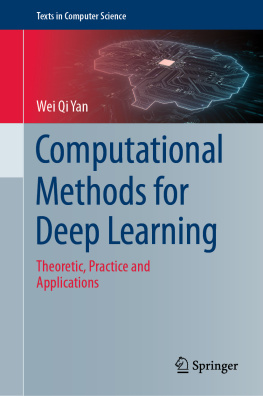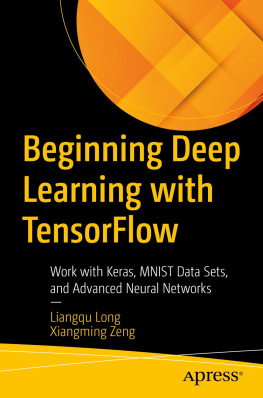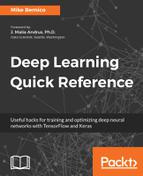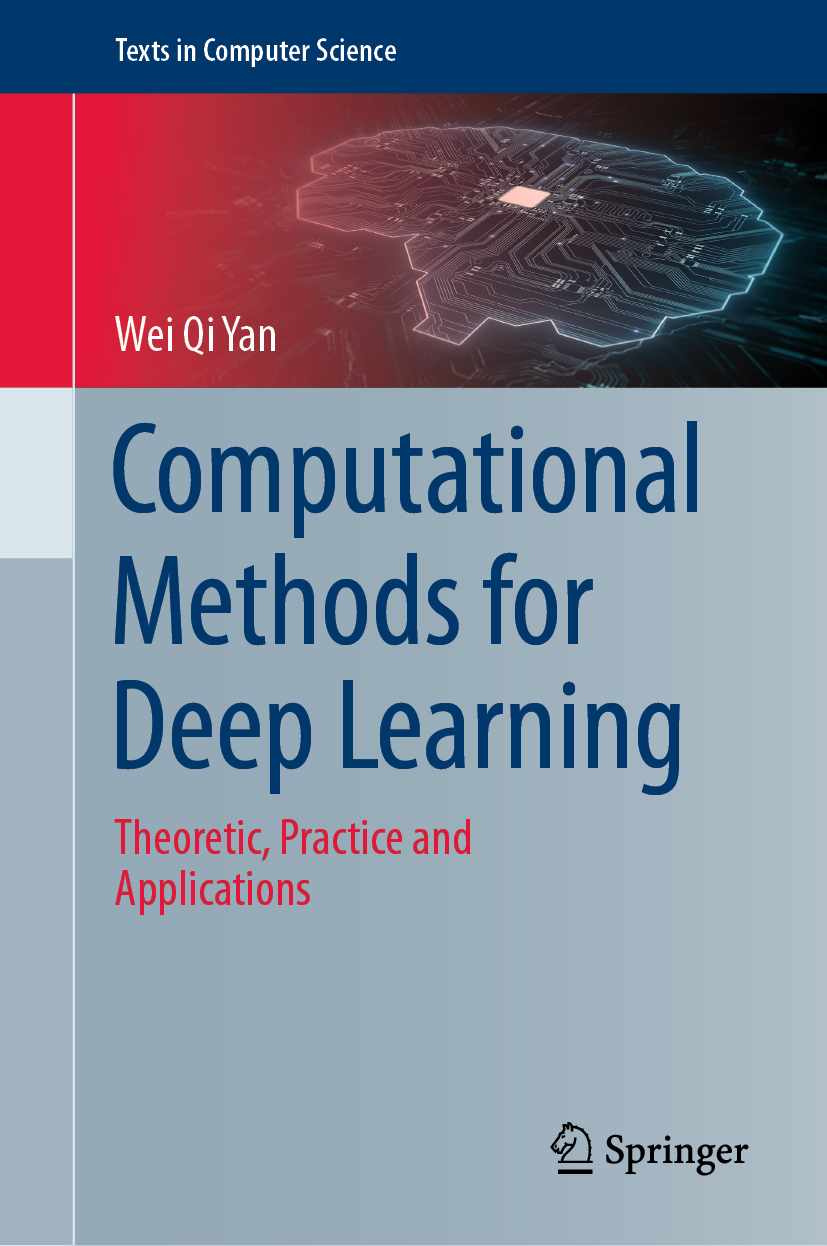Wei Qi Yan - Computational Methods for Deep Learning: Theoretic, Practice and Applications (Texts in Computer Science)
Here you can read online Wei Qi Yan - Computational Methods for Deep Learning: Theoretic, Practice and Applications (Texts in Computer Science) full text of the book (entire story) in english for free. Download pdf and epub, get meaning, cover and reviews about this ebook. year: 2020, publisher: Springer, genre: Children. Description of the work, (preface) as well as reviews are available. Best literature library LitArk.com created for fans of good reading and offers a wide selection of genres:
Romance novel
Science fiction
Adventure
Detective
Science
History
Home and family
Prose
Art
Politics
Computer
Non-fiction
Religion
Business
Children
Humor
Choose a favorite category and find really read worthwhile books. Enjoy immersion in the world of imagination, feel the emotions of the characters or learn something new for yourself, make an fascinating discovery.
- Book:Computational Methods for Deep Learning: Theoretic, Practice and Applications (Texts in Computer Science)
- Author:
- Publisher:Springer
- Genre:
- Year:2020
- Rating:3 / 5
- Favourites:Add to favourites
- Your mark:
Computational Methods for Deep Learning: Theoretic, Practice and Applications (Texts in Computer Science): summary, description and annotation
We offer to read an annotation, description, summary or preface (depends on what the author of the book "Computational Methods for Deep Learning: Theoretic, Practice and Applications (Texts in Computer Science)" wrote himself). If you haven't found the necessary information about the book — write in the comments, we will try to find it.
Integrating concepts from deep learning, machine learning, and artificial neural networks, this highly unique textbook presents content progressively from easy to more complex, orienting its content about knowledge transfer from the viewpoint of machine intelligence. It adopts the methodology from graphical theory, mathematical models, and algorithmic implementation, as well as covers datasets preparation, programming, results analysis and evaluations.
Beginning with a grounding about artificial neural networks with neurons and the activation functions, the work then explains the mechanism of deep learning using advanced mathematics. In particular, it emphasizes how to use TensorFlow and the latest MATLAB deep-learning toolboxes for implementing deep learning algorithms.
As a prerequisite, readers should have a solid understanding especially of mathematical analysis, linear algebra, numerical analysis, optimizations, differential geometry, manifold, and information theory, as well as basic algebra, functional analysis, and graphical models. This computational knowledge will assist in comprehending the subject matter not only of this text/reference, but also in relevant deep learning journal articles and conference papers.
This textbook/guide is aimed at Computer Science research students and engineers, as well as scientists interested in deep learning for theoretic research and analysis. More generally, this book is also helpful for those researchers who are interested in machine intelligence, pattern analysis, natural language processing, and machine vision.
Dr. Wei Qi Yan is an Associate Professor in the Department of Computer Science at Auckland University of Technology, New Zealand. His other publications include the Springer title, Visual Cryptography for Image Processing and Security.
Wei Qi Yan: author's other books
Who wrote Computational Methods for Deep Learning: Theoretic, Practice and Applications (Texts in Computer Science)? Find out the surname, the name of the author of the book and a list of all author's works by series.












